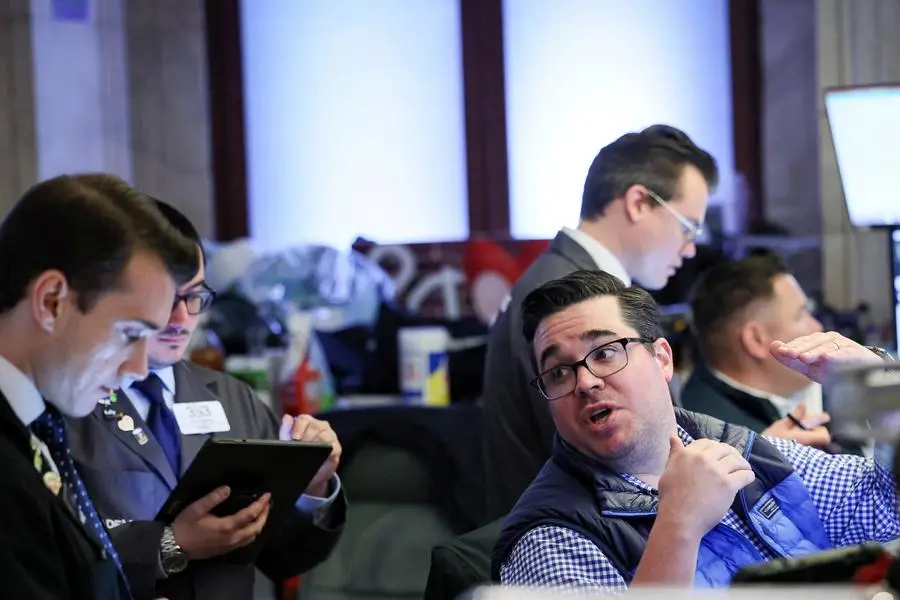PHOTO
LONDON - Global bond markets face the biggest amount of net sovereign issuance so far this year in June, just as economic data throws rate cuts into doubt, testing investors' so-far strong appetite for the debt.
Net government bond supply is likely to rise to $340 billion for the United States, euro zone countries and Britain, according to data from lender BNP Paribas, as redemptions fall and central banks continue to slash their holdings of the paper.
Although analysts expect markets to absorb the supply, it has the potential to add to upward pressure on yields - which move inversely to prices - and spook investors who were hoping that rate cuts would spur a bond market rally this year.
A pair of weak U.S. Treasury auctions on Tuesday may have been an early sign that the market, already grappling with strong economic data that has caused traders to push back their bets on when central banks will start cutting interest rates, is struggling to remain optimistic.
"We still have a lot of supply that needs to be absorbed," said Camille de Courcel, head of G10 rates strategy for Europe at BNP Paribas, adding that the euro zone will see its second highest month of net issuance so far this year in June.
De Courcel said she is wary of buying longer-dated bonds in June, even with the European Central Bank likely to lower interest rates, as economies recover and supply is strong. "We are very mindful of the risks that (yields) head higher as we go into June, especially in Europe," she said.
Developed market governments are still borrowing large amounts as they help their economies recover from the shocks of the COVID-19 pandemic and the energy crisis sparked by Russia's invasion of Ukraine. Elections in the United States and Britain, and for the European Union's Parliament this year are adding to the pressure to keep spending.
Central banks, meanwhile, are reducing their bond holdings in a process known as quantitative tightening. The Federal Reserve has been allowing $95 billion of government and mortgage-backed bonds to mature without replacement each month, although that is set to slow down from June, while the Bank of England is actively selling debt back to the market.
Investors have so far been eager to step in, with Britain receiving record demand for an inflation-linked 30-year bond in March. Euro zone countries have taken advantage of investor appetite to sell around 53% of their debt for the year already, according to BNP Paribas, up from 45% this time last year.
"It has been digested insanely well, I would say, and that's to some extent a bit surprising," said Michael Weidner, co-head of global fixed income at Lazard Asset Management. He said many investors are now attracted by higher yields after years of near zero returns, as well as the likelihood of a rally in prices when central banks kick-off their easing cycles.
June's elevated net supply is driven largely by a fall in maturing bonds so investors, without the return of principal sums, have less cash to reinvest in the primary market.
"That (mismatch) has never proven to be a huge issue," Weidner said. "Banks...will take on, I believe, a substantial part of the gross supply, being well aware of the fact that redemptions in the following month will be higher, and they will be able to set up to sell the book."
Investors' concerns about government borrowing tend to focus on the longer-term rise in debt levels around the world, particularly in the United States with the country's Treasury bonds considered one of the world's safest assets.
The Congressional Budget Office said in a March report it expects U.S. public debt to rise to 166% of GDP in 2054 from 99% this year.
"At some point, if we continue to see mounting deficits around the globe at this level, then you should see investors demand a higher risk premium to lend, especially for longer maturities," said Michael Goosay, global head of fixed income at Principal Asset Management.
"But in the near term, between central banks continuing to be the buyer of last resort to some degree as well as the concerns of a slowdown in growth and the need for central banks to ease policy...that is driving the way that investors are positioning."
(Reporting by Harry Robertson; Editing by Kirsten Donovan)























